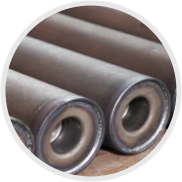 Afrikaans
Afrikaans  Albanian
Albanian  Amharic
Amharic  Arabic
Arabic  Armenian
Armenian  Azerbaijani
Azerbaijani  Basque
Basque  Belarusian
Belarusian  Bengali
Bengali  Bosnian
Bosnian  Bulgarian
Bulgarian  Catalan
Catalan  Cebuano
Cebuano  Corsican
Corsican  Croatian
Croatian  Czech
Czech  Danish
Danish  Dutch
Dutch  English
English  Esperanto
Esperanto  Estonian
Estonian  Finnish
Finnish  French
French  Frisian
Frisian  Galician
Galician  Georgian
Georgian  German
German  Greek
Greek  Gujarati
Gujarati  Haitian Creole
Haitian Creole  hausa
hausa  hawaiian
hawaiian  Hebrew
Hebrew  Hindi
Hindi  Miao
Miao  Hungarian
Hungarian  Icelandic
Icelandic  igbo
igbo  Indonesian
Indonesian  irish
irish  Italian
Italian  Japanese
Japanese  Javanese
Javanese  Kannada
Kannada  kazakh
kazakh  Khmer
Khmer  Rwandese
Rwandese  Korean
Korean  Kurdish
Kurdish  Kyrgyz
Kyrgyz  Lao
Lao  Latin
Latin  Latvian
Latvian  Lithuanian
Lithuanian  Luxembourgish
Luxembourgish  Macedonian
Macedonian  Malgashi
Malgashi  Malay
Malay  Malayalam
Malayalam  Maltese
Maltese  Maori
Maori  Marathi
Marathi  Mongolian
Mongolian  Myanmar
Myanmar  Nepali
Nepali  Norwegian
Norwegian  Norwegian
Norwegian  Occitan
Occitan  Pashto
Pashto  Persian
Persian  Polish
Polish  Portuguese
Portuguese  Punjabi
Punjabi  Romanian
Romanian  Russian
Russian  Samoan
Samoan  Scottish Gaelic
Scottish Gaelic  Serbian
Serbian  Sesotho
Sesotho  Shona
Shona  Sindhi
Sindhi  Sinhala
Sinhala  Slovak
Slovak  Slovenian
Slovenian  Somali
Somali  Spanish
Spanish  Sundanese
Sundanese  Swahili
Swahili  Swedish
Swedish  Tagalog
Tagalog  Tajik
Tajik  Tamil
Tamil  Tatar
Tatar  Telugu
Telugu  Thai
Thai  Turkish
Turkish  Turkmen
Turkmen  Ukrainian
Ukrainian  Urdu
Urdu  Uighur
Uighur  Uzbek
Uzbek  Vietnamese
Vietnamese  Welsh
Welsh  Bantu
Bantu  Yiddish
Yiddish  Yoruba
Yoruba  Zulu
Zulu Types of Pulley Lagging - Enhance Your Material Handling Efficiency
Types of Pulley Lagging
Pulley lagging is a crucial component in conveyor systems, playing a significant role in enhancing the efficiency, performance, and longevity of pulleys. The lagging provides a protective layer that decreases wear and tear, improves friction, and ensures smoother operation. In this article, we will delve into the various types of pulley lagging available and their respective applications.
1. Rubber Lagging
Rubber lagging is one of the most commonly used types of lagging. Made from durable rubber material, it offers excellent resistance to wear and provides a high friction surface, which is vital for material handling. This type of lagging is particularly effective in wet and slippery conditions, as it prevents slipping between the belt and the pulley. Additionally, rubber lagging can absorb shock, reducing stress on the pulley system and extending its lifespan.
Textile lagging incorporates fabrics such as polyester or nylon, offering flexibility and light weight while still providing moderate friction. It is often used in applications where a lightweight solution is necessary, and it is suited for smaller pulleys. Textile lagging is generally less durable than rubber lagging but can be an economical choice for certain applications, especially in industries with lighter loads.
3. Ceramic Lagging
types of pulley lagging

Ceramic lagging consists of a durable rubber base combined with ceramic tiles, providing exceptional grip and control over materials. This type is ideal for heavy-duty operations due to its superior friction properties, particularly in situations where the materials being transported are abrasive. The ceramic inserts ensure that wear is minimized, promoting longevity for both the lagging and the pulley. Businesses that handle bulk materials or operate in challenging conditions often prefer ceramic lagging.
4. Steel Lagging
For the most demanding environments, steel lagging can be utilized. This type employs a steel surface to provide extraordinary toughness and resilience against extreme wear. Steel lagging is typically used in heavy industrial settings where conveyors deal with abrasive materials. While it offers the highest durability, it is also the heaviest option and can cause more wear on the conveyor belts.
5. Grooved Lagging
Grooved lagging features a patterned surface that enhances grip and helps in better material handling. The grooves create channels that aid in the movement of materials, preventing them from slipping or accumulating on the surface. This type of lagging is beneficial in applications involving steep angles or high inclines.
Conclusion
Choosing the right type of pulley lagging is pivotal for the efficiency and durability of conveyor systems. Each type has unique characteristics that make it suitable for specific applications, and understanding these can lead to better performance and lower maintenance costs. Whether it's rubber for general use, ceramic for heavy-duty applications, or textile for lighter tasks, selecting the appropriate lagging is essential for optimal operation. Proper installation and maintenance further enhance the benefits of pulley lagging, ensuring that the entire conveyor system functions smoothly and reliably.
-
Revolutionizing Conveyor Reliability with Advanced Rubber Lagging PulleysNewsJul.22,2025
-
Powering Precision and Durability with Expert Manufacturers of Conveyor ComponentsNewsJul.22,2025
-
Optimizing Conveyor Systems with Advanced Conveyor AccessoriesNewsJul.22,2025
-
Maximize Conveyor Efficiency with Quality Conveyor Idler PulleysNewsJul.22,2025
-
Future-Proof Your Conveyor System with High-Performance Polyurethane RollerNewsJul.22,2025
-
Driving Efficiency Forward with Quality Idlers and RollersNewsJul.22,2025





























